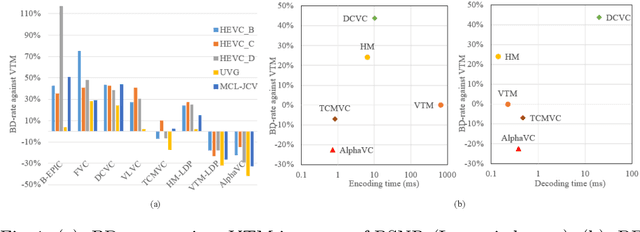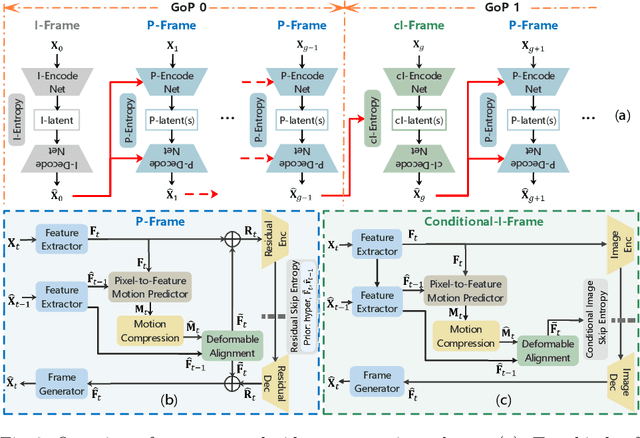Jue Mao
Bit Rate Matching Algorithm Optimization in JPEG-AI Verification Model
Feb 27, 2024Abstract:The research on neural network (NN) based image compression has shown superior performance compared to classical compression frameworks. Unlike the hand-engineered transforms in the classical frameworks, NN-based models learn the non-linear transforms providing more compact bit representations, and achieve faster coding speed on parallel devices over their classical counterparts. Those properties evoked the attention of both scientific and industrial communities, resulting in the standardization activity JPEG-AI. The verification model for the standardization process of JPEG-AI is already in development and has surpassed the advanced VVC intra codec. To generate reconstructed images with the desired bits per pixel and assess the BD-rate performance of both the JPEG-AI verification model and VVC intra, bit rate matching is employed. However, the current state of the JPEG-AI verification model experiences significant slowdowns during bit rate matching, resulting in suboptimal performance due to an unsuitable model. The proposed methodology offers a gradual algorithmic optimization for matching bit rates, resulting in a fourfold acceleration and over 1% improvement in BD-rate at the base operation point. At the high operation point, the acceleration increases up to sixfold.
Bit Distribution Study and Implementation of Spatial Quality Map in the JPEG-AI Standardization
Feb 27, 2024Abstract:Currently, there is a high demand for neural network-based image compression codecs. These codecs employ non-linear transforms to create compact bit representations and facilitate faster coding speeds on devices compared to the hand-crafted transforms used in classical frameworks. The scientific and industrial communities are highly interested in these properties, leading to the standardization effort of JPEG-AI. The JPEG-AI verification model has been released and is currently under development for standardization. Utilizing neural networks, it can outperform the classic codec VVC intra by over 10% BD-rate operating at base operation point. Researchers attribute this success to the flexible bit distribution in the spatial domain, in contrast to VVC intra's anchor that is generated with a constant quality point. However, our study reveals that VVC intra displays a more adaptable bit distribution structure through the implementation of various block sizes. As a result of our observations, we have proposed a spatial bit allocation method to optimize the JPEG-AI verification model's bit distribution and enhance the visual quality. Furthermore, by applying the VVC bit distribution strategy, the objective performance of JPEG-AI verification mode can be further improved, resulting in a maximum gain of 0.45 dB in PSNR-Y.
AlphaVC: High-Performance and Efficient Learned Video Compression
Jul 29, 2022



Abstract:Recently, learned video compression has drawn lots of attention and show a rapid development trend with promising results. However, the previous works still suffer from some criticial issues and have a performance gap with traditional compression standards in terms of widely used PSNR metric. In this paper, we propose several techniques to effectively improve the performance. First, to address the problem of accumulative error, we introduce a conditional-I-frame as the first frame in the GoP, which stabilizes the reconstructed quality and saves the bit-rate. Second, to efficiently improve the accuracy of inter prediction without increasing the complexity of decoder, we propose a pixel-to-feature motion prediction method at encoder side that helps us to obtain high-quality motion information. Third, we propose a probability-based entropy skipping method, which not only brings performance gain, but also greatly reduces the runtime of entropy coding. With these powerful techniques, this paper proposes AlphaVC, a high-performance and efficient learned video compression scheme. To the best of our knowledge, AlphaVC is the first E2E AI codec that exceeds the latest compression standard VVC on all common test datasets for both PSNR (-28.2% BD-rate saving) and MSSSIM (-52.2% BD-rate saving), and has very fast encoding (0.001x VVC) and decoding (1.69x VVC) speeds.
 Add to Chrome
Add to Chrome Add to Firefox
Add to Firefox Add to Edge
Add to Edge